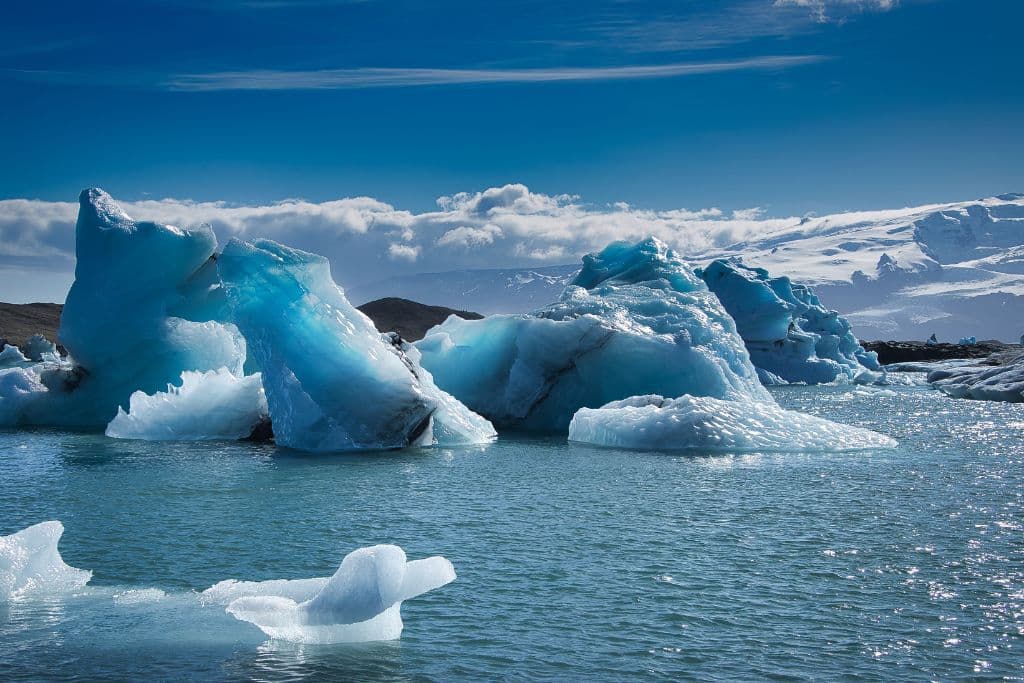Understanding the Role of Antarctic Ice in Ocean Currents
Antarctic ice plays a crucial role in the regulation of global ocean currents, impacting climate patterns and sea levels worldwide. As massive ice sheets in Antarctica melt or break off into the ocean, they release freshwater that can significantly alter the salinity and temperature of surrounding seawater, influencing the movement of ocean currents.
The Impact on Climate Systems
Changes in Antarctic ice contribute to shifts in ocean circulation patterns, affecting the distribution of heat energy around the globe. This can lead to disruptions in weather systems, such as altering the strength and paths of major ocean currents like the Gulf Stream.
The Fragility of the Antarctic Ice
Recent studies show that Antarctic ice shelves are melting at an accelerated rate due to rising global temperatures, posing a serious threat to the stability of the region’s ice sheets. As these ice shelves disintegrate, they not only contribute to rising sea levels but also impact the delicate balance of ocean currents.
The Need for Continued Research
Understanding the complex dynamics between Antarctic ice and ocean currents is essential for predicting future climate scenarios and mitigating the risks associated with sea level rise and extreme weather events. Scientists continue to study these interactions to improve climate models and enhance our ability to adapt to a changing environment.
Consequences of Ice Melting on Global Ocean Circulation
As Earth’s ice caps and glaciers continue to melt at alarming rates due to climate change, the consequences on global ocean circulation are profound and far-reaching. The melting ice contributes to the influx of freshwater into the oceans, disrupting the delicate balance of salinity levels that drive the ocean currents.
This disruption in ocean circulation patterns can lead to a slowdown or even a shutdown of crucial currents like the Gulf Stream, which plays a significant role in regulating weather patterns and climate around the world. A weakened Gulf Stream, for example, could result in altered temperature distributions, affecting marine ecosystems, weather systems, and potentially leading to more extreme weather events.
Furthermore, changes in ocean circulation can impact marine life by altering nutrient availability and migration patterns. Fish populations, for example, may shift their habitats in response to these changes, potentially impacting both commercial fisheries and marine biodiversity.
From a broader perspective, the consequences of ice melting on global ocean circulation highlight the interconnectedness of Earth’s systems and the urgency of addressing climate change. It underscores the need for immediate action to reduce carbon emissions, mitigate the impacts of climate change, and preserve the stability of our planet’s delicate ecosystems.
Recent Research Findings on Antarctic Ice and Ocean Dynamics
Antarctica, a region shrouded in mystery and scientific marvel, continues to reveal intriguing insights through recent research studies on its ice and ocean dynamics. Scientists have uncovered groundbreaking findings that shed light on the delicate balance between Antarctic ice and the surrounding oceans.
Key Discoveries and Implications
Recent research has shown that the melting of Antarctic ice shelves is contributing significantly to rising sea levels globally. This alarming trend underscores the urgent need for immediate action to mitigate the impact of climate change on Antarctica’s fragile ecosystem.
Emerging Trends and Future Prospects
With advancements in technology and innovative research methods, scientists are gaining a better understanding of the complex interactions between Antarctic ice and ocean dynamics. This knowledge holds the key to predicting future changes in the region and exploring sustainable solutions to preserve Antarctica’s pristine environment.
Future Predictions: What the Study Means for Global Climate Patterns
Breaking Down the Headlines
As researchers delve into the intricate details of climate studies, the focus is shifting towards understanding the implications for global climate patterns. In recent findings, the study sheds light on how specific factors may alter weather phenomena on a large scale.
The Bigger Picture
The correlation between human activities and climate change is becoming increasingly evident. This study serves as a crucial piece in the climate change puzzle, highlighting the potential trajectory of global climate patterns in response to environmental shifts.
What This Means Going Forward
Going forward, these study findings will likely guide policymakers and environmentalists in shaping strategies to mitigate the impacts of climate change. Industries may also need to adapt to new regulations and practices to align with the emerging climate patterns, fostering a more sustainable future for all.
